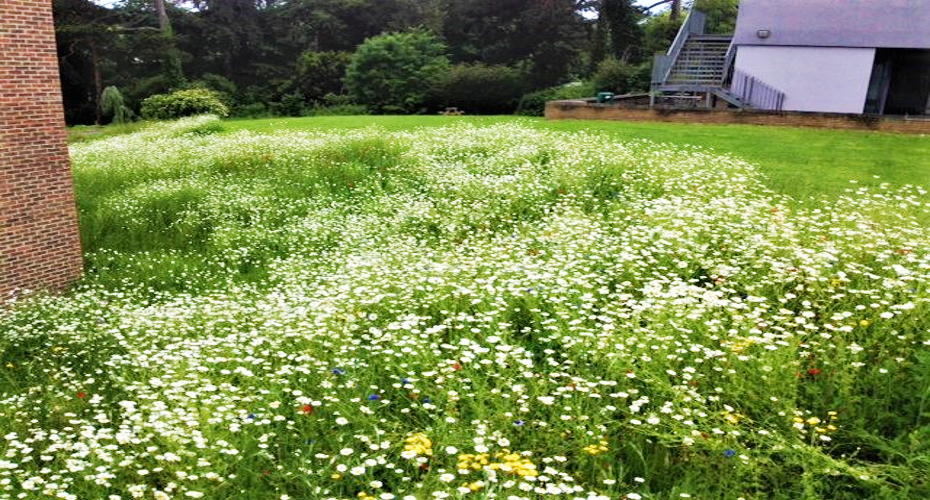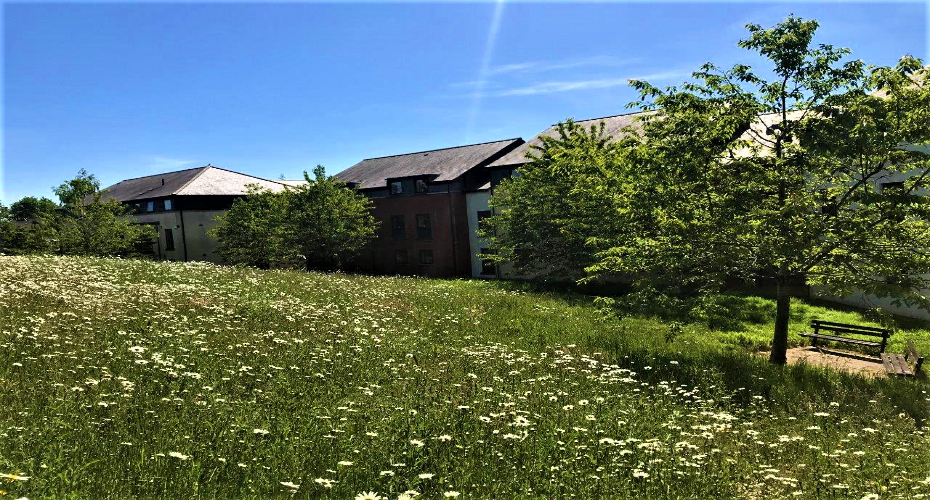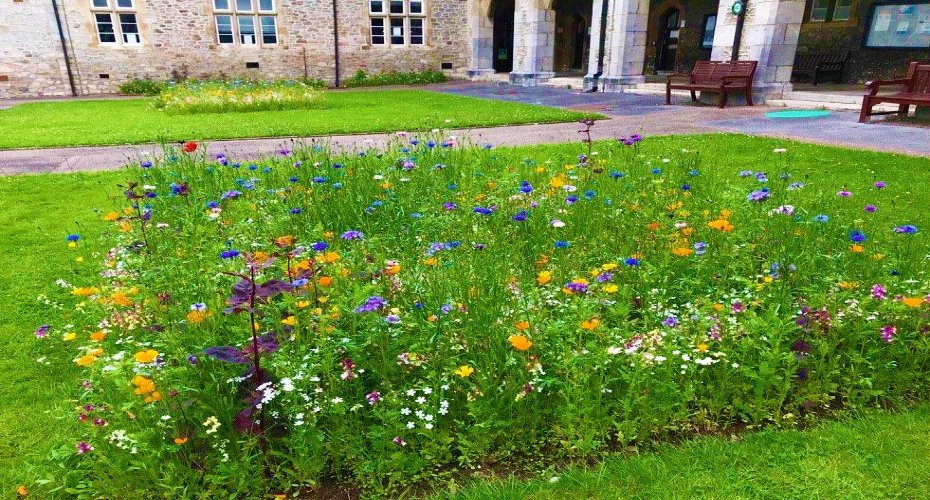Wildflower meadows
As well as growing and cultivating plants collected from every continent of the world, the grounds of our Exeter campuses also continue to grow native plants that provide habitats for our traditional and sometimes rare flora and fauna.
Grounds staff have identified sites suitable for establishing areas that can be sympathetically managed in order that native plants can thrive.
We have both perennial and annual wildflower meadows on campus. Some of these e.g. in strips alongside watercourses, have been encouraged to develop naturally through a reduction in cutting regimes. Others have been deliberately established, either to create nectar highways or to take areas out of regular maintenance which may have become too steep to cut safely with machinery.
Wildflowers are easily outcompeted by grasses and dominant broad-leafed species, so the areas require careful management and are not left unmaintained.
Current sites include the rear of Laver/Harrison buildings, Forum South Piazza ponds, roof of Mood Disorder Centre, Duryard residences, front of the Peter Chalk Centre and Laver pond. The Students' Green Unit have also established a wildflower area, in collaboration with the Grounds Team, at the rear of Washington Singer.
Typical species found in wildflower meadows include flowering bulbs e.g. narcissus and fritillaria, poppy, cornflower, nettle and orchid. Once established these attract wildlife such as rabbits, hares, foxes, butterflies, mice, voles, frogs, bees and birds.
In addition to the wildflower meadows, a small area of chamomile lawn has been created at the side of Lafrowda steps.
Cumulatively the native and non-native plants on campus provide biodiversity and long flowering periods that contribute to different habitats for insects, amphibians, birds and mammals to thrive in. In turn, this provides opportunities for a variety of student and research projects to be undertaken on the grounds. They also make a significant contribution to the biodiversity of Exeter and the South West.

.jpg)




